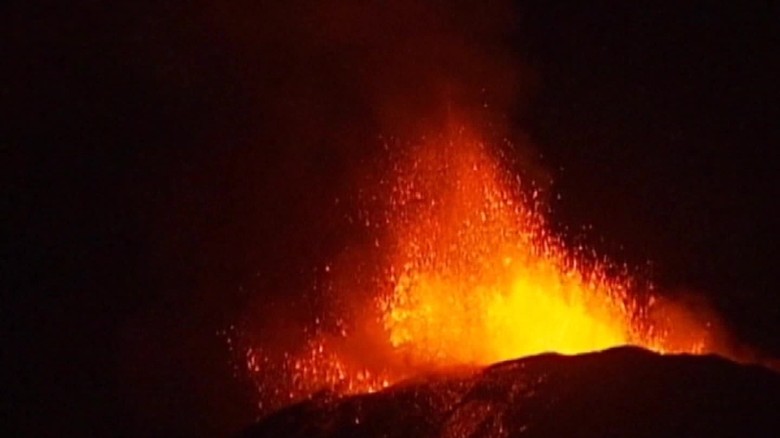(CNN)The world's most active volcanoes lie along what's called the Ring of Fire.
It's also where most earthquakes happen as tectonic plates push against each other, causing tremors.
The "ring" stretches along a 25,000-mile (40,000-kilometer) arc from the boundary of the Pacific Plate, to smaller plates such as the Philippine Sea plate, to the Cocos and Nazca Plates that line the edge of the Pacific Ocean.
People most at risk from volcanic eruptions and earthquakes live in countries that lie along the Ring of Fire, including Chile, Japan, the US west coast, and other island nations including the Solomon Islands to the western seaboard of North and South Americas.
How did the Ring of Fire form?
Tectonic plates are massive slabs of the Earth's crust. These move constantly above the mantle -- a layer of solid and molten rock below the Earth's crust.
The Ring of Fire was formed as oceanic plates slid under continental plates.
Volcanoes along the Ring of Fire are formed when one plate is shoved under another into the mantle -- a solid body of rock between the Earth's crust and the molten iron core -- through a process called subduction.
Large earthquakes -- which risk triggering tsunamis -- also occur in subduction zones.
How are volcanoes formed?
Volcanoes are created when magma, or hot molten rock, rises through cracks in the Earth's crust, causing pressure to build up.
When tectonic plates are pulled or pushed together, the pressure releases, making the magma erupt in the form of ash and or lava. Once the lava cools it forms a new crust.
Volcanoes slowly form over time as layers of crust build up after several eruptions.
At least 450 active and dormant volcanoes line the Ring of Fire.
How are earthquakes triggered?
Earthquakes represent the energy release from the interior of the Earth, where huge amount of heat is stored.
The heat drives the plates to move. When two plates move against one another and produce friction, it causes energy to build up. When the energy is released it triggers an earthquake.
"It takes tens of thousands of years for the energy to build up, but only a matter of seconds for it to be released," said Hongfeng Yang, a seismologist at the Chinese University of Hong Kong.
Tectonic plates usually move an average of a few centimeters each year, but when an earthquake strikes, they can move several meters per second.
Can earthquakes be predicted along the Ring of Fire?
Seismologists can't yet predict when or where earthquakes will strike, or how large they will be.
Some researchers argue that there are certain conditions -- such as hydraulic fracturing when we drill deep into the sea to extract energy resources -- induce earthquakes. But there's no hard scientific evidence to back this up.




